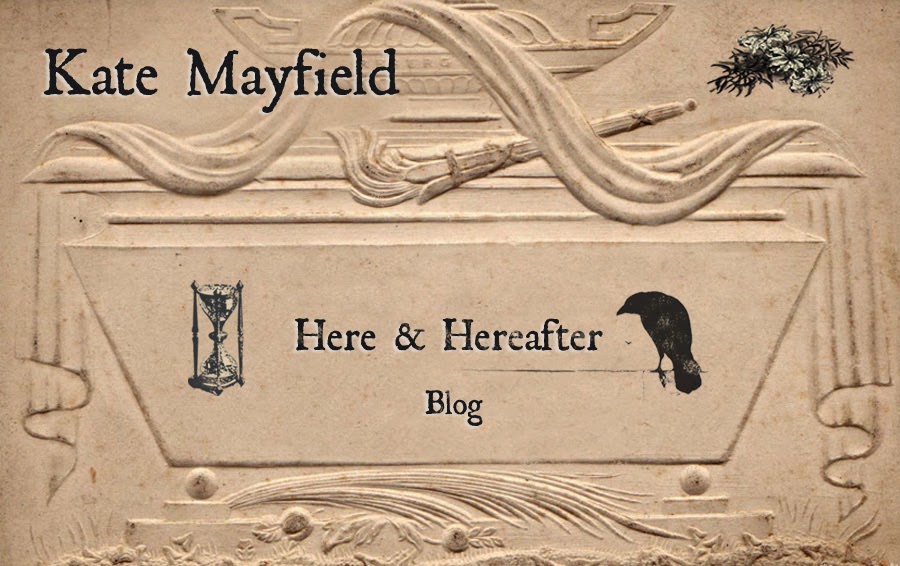I once asked my father, “What do you all talk about in the embalming room?”
A cynical streak must have run through me from an early age, or surely I wouldn’t have dreamed up the answer I expected to hear. I thought they swayed away from the conversation of death. Yesterday’s poker game, or the freshest man-gossip, like Luke’s new tractor, or the shocking news that Henry secretly bakes pies; these were the topics I imagined swished back and forth across the embalming table and its sheeted occupant.
With my ear to the closed door, not sure if they were aware of my presence by the groan of the floor when I shifted weight, I heard murmurs, the sort of low-voiced chorus men make. I stayed, straining to hear until my father inevitably cranked up the odd machines and when they began to hum, I ran away.
They worked at their unthinkable, unmentionable tasks remembering the person who lay before them and his or her place in the community. They spoke of her family, his last wishes, how big the funeral might be. They ran through the list of “survivors” - always thought that an odd word for family members – that would be read on the local radio news the following day. Mr. Thurmond is survived by….
Slowly, methodically, this father of mine and his employees brought to close another life.
The funeral business was and continues to be a predominantly male profession. Men work their grief with their hands. They dig graves, embalm, act as pallbearers, they are lifters of heavy funeral furniture; even the three florists in our town were men. They rush about constantly with “important things to do”. What then of the women?
I was thinking about this the other day when I read in the Sunday paper that crazy quilts are in vogue now. The crazy quilts fad brought to mind mourning quilts, the work of female hands that represented a way to busy their grief. Many women used the crazy quilt pattern to form mourning quilts, like this one from the late 19th century in Kentucky.


The mourning quilt takes many forms and enters subgenre land. This Civil War era quilt of grief uses patches of men’s shirting and includes fabric from a uniform.

Slowly, methodically, fabric, needles, thread, stitching, stitching, stitching, women mourned through their fingers. Their contribution was sometimes thrown over a plain wooden coffin, or, crossing the prairie, when burial time was short and there was no means to build a coffin, the mourning quilt served as a shroud.
There were Memorial Quilts and even Deathwatch Quilts on which symbols of mourning were stitched as the family waits the final illness of the patriarch. A personal favorite mourning quilt is the Graveyard Quilt. The most famous made by Elizabeth Roseberry Mitchell in 1839 and part of the collection of the Kentucky Historical Society in Frankfort Kentucky.

In the center is a fenced graveyard with four coffins, each represents a deceased family member, upon which is stitched their name. There is space in the graveyard for thirteen coffins, one for each of Elizabeth's family members who are represented in the coffins around the border, probably basted on and therefore easier to remove. When a person died their coffin would be moved into the graveyard. According to family history Elizabeth made this quilt after the death of her two young sons. Quite a frank and finite way of depicting the life of a family and I swallowed a few times when I first saw it.
My father once told me that everything is political, even death and mourning. I hadn’t a clue what he was talking about. Now I do. Jonathan Shannon was the first male winner of the American Quilter's Society Best of Show Award in 1993 with his quilt, "Air Show". A year later his new quilt, a mourning quilt, "Amigos Muertos" was rejected as an entry to the American Quilter’s Society. Shannon’s quilt commemorates artists lost to cancer and AIDS. The director of the show told Shannon that the quilt was considered to be upsetting and that it wasn't the sort of quilt that visitors to the show would want to see. In response Shannon wrote an open letter to quilt makers and received four thick binders full of replies of support – a turning point in the quilt-making world regarding the political aspects of death, mourning and the subject matter of quilting.

“Amigos Muertos” later won the National Patchwork Championship in England.


